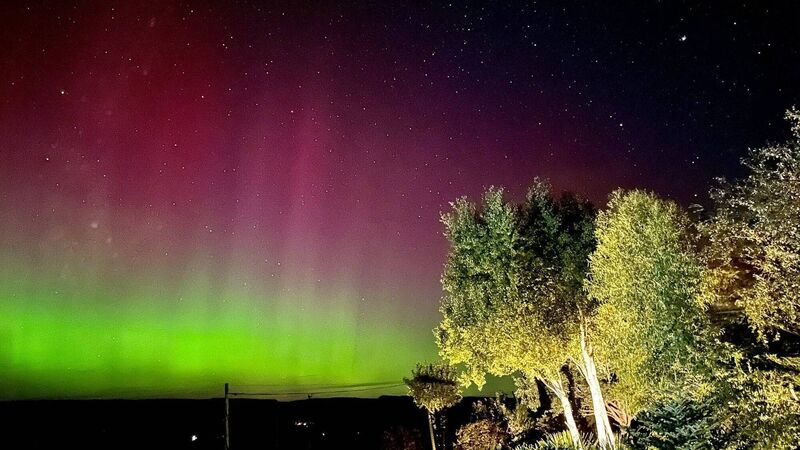Parts of Ireland treated to 'breathtaking' Northern Lights display

Aurora borealis spotted over Northern Ireland earlier this week. Picture: Rachel Cassidy/@cassidy_clicks
Lucky stargazers across the country were treated to a stunning display of Northern Lights this week.
The aurora display was strongest in the north and west of the country but could be seen dancing across the sky in Dublin and Carlow as well.
Thankfully, for those of us who missed the spectacular sight, a whole host of amateur astronomers and quick-thinking photographers took plenty of snaps.
Rachel Cassidy said that she was left in complete awe as the sky came alive with a "breathtaking" display.
She said it was one of the strongest displays she has witnessed in Northern Ireland.
"The duration of the display was very impressive with aurora visible from around 11pm until 3am," she told the .
Cassidy said it is extra special to be able to see the natural phenomenon from her own home in the North Sperrins.
"I could see huge pillars of light beam into the sky like torch lights, and the green of the aurora along the horizon with faint hints of pinks and purples, all visible to the naked eye."
A time-lapse of last night's Aurora display from Rosses point, Sligo, Ireland.#aurora #ireland #northernlights #sligo #auroraborealis pic.twitter.com/WXcPYFEIEo
— Aurora Alerts Ireland (@auroraalertsIRE) September 13, 2023
She explains that the strong solar storm at the beginning of the aurora season bodes well for the season ahead.
A lot of factors need to come together in order for us to be able to see a great display, including the all-important clear skies.
"Often displays can be strong but fade before darkness falls," Cassidy says.
The Northern Lights are the result of collisions between gas particles in the atmosphere and charged particles ejected from the sun's atmosphere.
Over 3 hours later after the Balbriggan photos last night, the aurora is still ongoing but this time from Burrow Beach. More light pollution here so wavelengths not as vivid. #sutton #aurora #northernlights #dublin #ireland pic.twitter.com/JcetMr6LdO
— Sryan Bruen Photography (@sryanbruenphoto) September 13, 2023
The colours change depending on the type of gas particles. The greenish-yellow colour is from oxygen molecules around 100km above the earth while blue or purple auroras indicate that nitrogen molecules are present.
According to the Space Weather Prediction Center, the best aurora is usually seen within an hour or two of midnight - between 10pm and 2am.
It also says that the best times for aurora-watching are around the spring and autumn equinoxes. The autumn equinox is on September 23.
The west and north coasts of Ireland tend to offer the best chance of seeing the aurora borealis but have been spotted elsewhere.
Chilling in my front garden with views like this… it doesn’t get much better than this!
— Bernard Geraghty Landscape Tours (@bg_tours) September 13, 2023
Ohhh the green and red of Mayo 💚❤️ #mayo #Ireland #WildAtlanticWay @CarlowWeather @DonegalWeatherC @KildareMet @wildatlanticway @TourismIreland @VirginMediaNews @discoverirl pic.twitter.com/1tRcBZEYMJ
Earlier this year, the Northern Lights were spotted as far south as Cork and Kerry.
According to Astronomy Ireland, aurora borealis probably only happens in Ireland 1% of the time that it happens in the polar regions.






